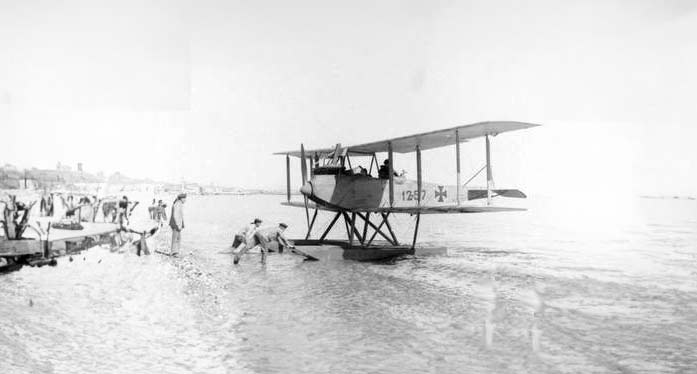Dive into the technicalities, design, performance, and historical significance of the Friedrichshafen FF.33, a pivotal German seaplane of World War I.
This article explores the Friedrichshafen FF.33, its development amidst the turbulent World War I era, the design features that distinguished it, its performance specifications, and its significant role in military operations. The Friedrichshafen FF.33 was a pioneering German seaplane developed during World War I, showcasing unique design features and performance metrics tailored to the requirements of naval reconnaissance.
History of the Development of the Friedrichshafen FF.33
In the early 20th century, with the outbreak of World War I, the need for aerial reconnaissance, especially over water, became crucial. The German navy recognized the potential of aircraft in naval warfare, especially for spotting enemy fleets and subsurface vessels.
The Friedrichshafen FF.33 was conceived to meet this pressing need. The program began in 1914, led by the German aircraft manufacturer Flugzeugbau Friedrichshafen. On its first flight in December of that year, the FF.33 was poised to redefine naval aviation.
While the Friedrichshafen FF.33 did not have a NATO nickname (as NATO was established much later, in 1949), it was often referred to simply as the “FF.33” by German pilots and naval officers.
Design of the Friedrichshafen FF.33
The FF.33 had a characteristic biplane design typical of the era but was tailored for seaborne operations. The aircraft was equipped with a central pontoon and two smaller stabilizing floats, facilitating water landings.
Measuring around 10.3 meters (33.8 feet) in length with a wingspan of approximately 16.3 meters (53.5 feet), the FF.33 was robust for its time. Made primarily of wood and fabric, it was lightweight yet durable.
One of the main design advantages of the FF.33 was its stability in water, thanks to its float configuration. However, this design also had drawbacks. The addition of floats added drag, slightly compromising speed and maneuverability in the air.

Performance of the Friedrichshafen FF.33
Powered by a 150 hp Benz Bz.III engine, the FF.33 could achieve speeds up to 140 km/h (87 mph). It had an operational ceiling of around 3,000 meters (9,843 feet) and a range of approximately 500 kilometers (311 miles).
While these specs were impressive for early naval aviation, when compared to some contemporaneous land-based reconnaissance aircraft, the FF.33 was slightly slower. However, its ability to operate from water made it indispensable for the German navy.
Military Use and Combat of the Friedrichshafen FF.33
The primary role of the FF.33 was reconnaissance. However, as the war progressed, they were sometimes armed with light bombs and machine guns, allowing them to engage in combat.
The FF.33s participated in numerous naval operations during WWI. They provided valuable intelligence to the German navy by spotting enemy fleet movements and detecting submarines.
While the FF.33 was an asset for the German forces, it faced competition from other seaplanes like the British Short Type 184. The FF.33 did not see significant sales to other nations, as it was primarily a tool of the German navy.
By the war’s end, and with rapid advancements in aviation technology, the FF.33 was retired and replaced by newer aircraft models.
The Friedrichshafen FF.33 played a pivotal role in naval aviation during World War I. While it may not have been the fastest or most heavily armed, its ability to operate from water, combined with its dependable performance, cemented its place in aviation history.
Back to the Seaplanes section.